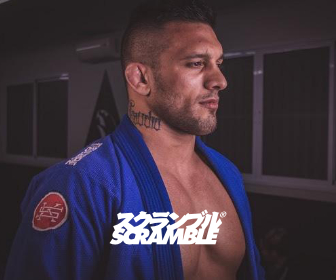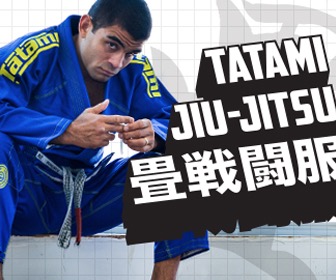The Open Guard is the most ancient of guard types in Brazilian Jiu Jitsu, the source of all other guard playing styles and also one of the most versatile. You may consider a position an open guard every time when one of the combatants in a grappling match has his back back towards the ground, while attempting to control his opponent using his open legs (ankles not crossed). Today there are several sub-types of the open guard depending on grip and leg positioning such as the Spider Guard, Lasso, Butterfly, etc., most being re-labellings of traditional open guard styles.
Brief History of the Open Guard
Lineage: The Guard > Open Guard
The open guard arrived in Brazil by way of Japan. The history is well known, with a former student of Jigoro Kano (founder of Judo) by the name of Mitsuyo Maeda, entering the country and finding in Carlos Gracie an adequate pupil. Although Carlos was a sound developer of the guard game, it was his younger brother, Helio Gracie, who picked up from what he saw in his brother’s teachings and pushed it to the next level, creating several leverage based positions which he used to submit his opponents or unbalance and revert positions, what we now call “a sweep”.
When questioned about the origins of the guard in Jiu Jitsu, the great Mario Claudio Tallarico, one of the most prestigious fighters ever in the sport, a man that has been around BJJ since the early 1960s, said: “There is a great misunderstanding about the open guard. The great revolutionary of the open guard game was professor Helio Gracie. Fighting from the guard position was one of the great weapons developed by Dom Helio Gracie. To help the weaker person beat a stronger and heavier opponent. The key element of the ‘true’ Brazilian Jiu Jitsu has always been the open guard, which was passed down to us by Dom Helio and Dom Carlos”.
Helio and Carlos Gracie set the rule that Brazilian Jiu Jitsu fighters needed to learn how to fight from a bottom position, and even though it is still considered “the best of worst positions” to be in an actual fight, it certainly made a huge impact in the fighting game. Being given the role of ‘family coach’, Helio Gracie proceeded to inspire many more Gracie fighters to excel at the open guard. This echoed down through Rilion Gracie, Carlos Gracie Junior, Crolin, Royce, Royler and many others who then passed this invaluable information to their own students, each adding their experience, leading to huge developments in the late 1980s, all the way through the 1990s. The era of the ‘unpassable’ open guards.
Since its start the open guard has had constant tweaks and adaptations to people’s guard passing trends, from spider guards to de-la rivas, inverted/tornados, half-spiders or lapel guards. Many of which have always existed, they have just been recycled and offered to young BJJ’ers as fresh ideas. Regarding this “evolution” of the guards, Nino Schembri, a two time world champion, and one of the most creative guard players of all time told BJJ Heroes: “Man, it’s funny that today you see everyone branding positions that already existed. No one put names on positions back in the day, it was all called open guard. I’ve been doing lasso guard for 25 years before someone told me in the US that it was called ‘Lasso’.”
In sum, the open guard is by far the oldest and most tested of all guards, withstanding the test of time and passing it with flying colours through the creativity of grapplers and the plasticity of this incredibly versatile position.
Recommended Open Guard Instructionals
Famous Open Guard Grapplers in Jiu Jitsu
- Helio Gracie
- Carlos Gracie Junior
- Rilion Gracie
- Cassio Cardoso
- Ricardo De La Riva
- Nino Schembri
- Fernando Margarida
- Ricardo Vieira
- Fabricio Werdum
- Braulio Estima
- Romulo Barral
- Michelle Nicolini
Open Guard Videos & Techniques
Lucio Lagarto Armbar and Triangle from Open Guard
Helio Gracie vs Kato
Rilion Gracie vs unknown
Margarida vs Cachorrinho
Romulo Barral vs Vinicius Marinho
Pé de Pano vs Guigo















